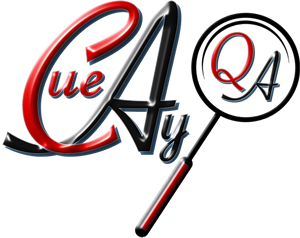|
In-Process Inspections
The intent of this visit involves mentoring and
quality awareness training. There are several reasons why this is important and
adds value to any deployment of significant size. As you are aware the very
beginning of a deployment or rollout is the most critical. This is when you are
looking to establish the installation process and the quality norms you and your
customers expect. It also creates the standard by which your company, your
crews, and installation methods will be evaluated during an inspection.
Requesting an in-process audit often eliminates the unhealthy habits and errors
that would be replicated as the job progresses.
Final Inspections
Consists of a random sample of sites, specific
equipment types, project types, where findings are identified, documented,
referenced, and addressed. A formal report is generated determining the level of
conformity. A final visit validation will consist of a sampling of
representative amounts of equipment deployed and processes utilized at the time
of the inspection. Defects are rated as majors or minors and corrective actions
are required to take place as defined by corporate or customer practices.
The process ensures:
1. Findings for improvement are identified
2. The product is conforming
3. Meets contractual requirements
4. Meets expected customer deliverables per
standards
Certification Audits
These audits are requested by corporate for warranty
purposes to ensure compliance by the customer that regular and routine
maintenance has taken place. The product installation is rated in its entirety
to a preset criterion. It looks at the condition of the equipment, all circuit
packs, shelves, and bays to establish that it meets a minimum baseline before it
can be upgraded or placed into warranty.
Grounding Audits
These audits are usually requested when the equipment
is impacted by a number of miscellaneous and unknown conditions. It may be
related to noise, lightning, or current flow issues. The audit delivers a ground
map with current amperage readings, direction of current flow, and validates no
cross contamination between electrical fields exist, etc. The report contains
recommendations to improve the overall grounding scheme as required by telephony
rules and practices.
Process Writing
With our vast experience in the installation and
operations arena, can offer process authorship to assist in driving best in
class operations. We can build a library that outlines the planning through to
the close of your project. These same processes can evolve as enablers to ISO
9000/9001 and TL9K certifications. Once your organization becomes process driven,
cross training or training new employees becomes an easy task. It also allows
easier control of the operation and promotes visibility to areas for continual
improvements. Process driven organizations are usually more expeditious at
completing assign tasks at a higher quality level.
ESD Awareness training
Electrostatic Discharge or ESD is a fact of everyday
life, and it is of particular importance in quality control and assurance
programs. Learn the fundamentals of static, the damage it causes and how to
protect your sensitive material from it.
Since the electronics boom of the 1980s, the awareness
of ESD has risen considerably because it has been shown to affect many devices.
In fact, many manufacturers today consider all components to be static
sensitive. ESD can dramatically increase costs through equipment downtime, yield
loss, process disruptions, and an increase in warranty claims. Manufacturers
spend thousands of dollars each year to ensure their workplaces are protected
against the effects of static. Despite the importance, ESD is an obscure subject
and proves confusing to most people. So, CueAy created the ESD Basics
Presentation as a tool to educate employees about the cause and prevention of
ESD.
Environmental Health & Safety Awareness Training
Training is a valuable tool for informing workers
about workplace potential hazards and controls so they can work safely and be
more productive. Knowledge and awareness ensure that everyone plays a key role
in developing, implementing, and improving the program.
You must provide workers with information on all known
environmental, safety, and health hazards of the workplace and your process to mitigate them.
Your employees need to be involved in identifying potential hazards throughout
the facility. Your workers have a firsthand understanding of the workplace,
which is invaluable in finding potential hazards.
Involving your workers in the entire EHS program
development process ensures ownership and will help workers assume
responsibilities.
|


